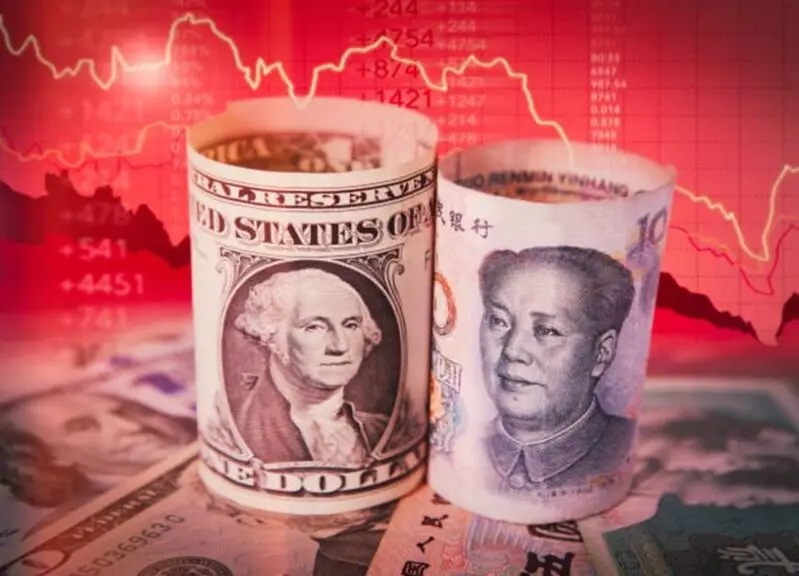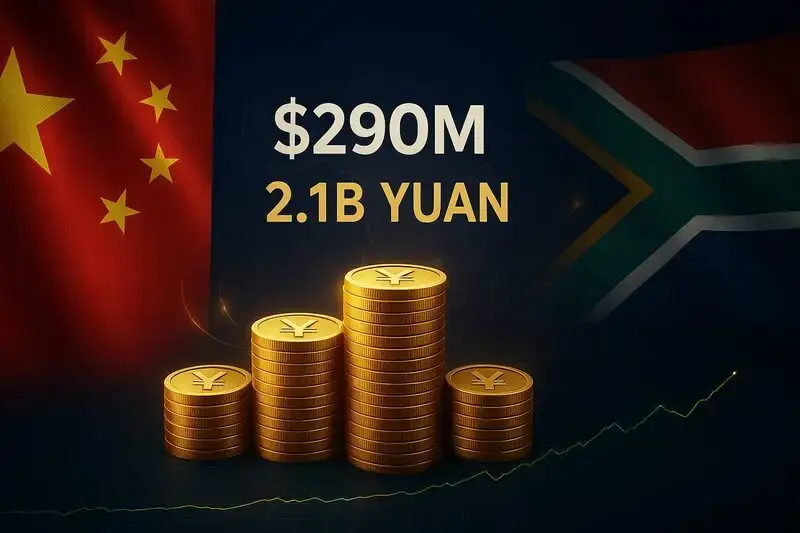A BRICS yuan loan agreement was signed this week between China Development Bank and the Development Bank of Southern Africa, and it marks a significant shift in how BRICS financing is being structured right now. The deal is worth 2.1 billion yuan, which comes out to about $290 million, and represents the first yuan-denominated financing cooperation between these two institutions.
This BRICS yuan loan will support projects across Africa in sectors such as infrastructure, energy, information and communications, water conservancy and sanitation, and also manufacturing. At the time of writing, China’s overseas lending in yuan has reached record levels, and this agreement also deepens China and South Africa relations through concrete financial mechanisms that go beyond diplomatic statements.
Also Read: BRICS To Convert US Dollar Loans Into Chinese Yuan
BRICS Yuan Loan Expands China South Africa Relations And Dollar Trade

What This BRICS Yuan Loan Means for Regional Development
The strategic importance of this BRICS yuan loan goes beyond the dollar amount involved. Song Wei, a professor at the School of International Relations and Diplomacy at Beijing Foreign Studies University, told the Global Times:
“The launch of the first yuan-denominated financing project between the CDB and the DBSA carries major strategic value economically, financially, and geopolitically.”
Song also clarified that the project assists in updating South Africa’s old infrastructure, aids in economic development, and bridges the shortfall of funds. On the one hand, due to limited domestic resources to spend on such vital budgets as electricity, transport and communications, yuan financing presents a new avenue to modernize vital projects and better the business conditions. The funds are also being directed toward water, healthcare, and education projects among others that benefit ordinary citizens and help address unemployment, particularly through education-based collaboration.
Banks positioned the agreement as part of broader China-Africa partnership action plans, and it reflects the two banks’ joint efforts to enhance the quality of cooperation within BRICS. As members of the BRICS Interbank Cooperation Mechanism, both institutions work to strengthen financial ties that bypass traditional Western-dominated systems.
How BRICS Using Yuan Is Reshaping Global Trade Patterns
This BRICS yuan loan fits into a much larger pattern that’s been accelerating recently. China’s overseas renminbi lending has surged 35% to RMB3.4 trillion, marking an all-time high as Beijing accelerates its campaign to reduce dollar dependence. The Bank for International Settlements noted that 2022 marked a turning point away from dollar and euro-denominated credit and toward renminbi-denominated credit. Between 2020 and 2024, emerging markets received $373 billion in renminbi loans.
Countries like Kenya, Angola, and Ethiopia have already swapped their old dollar debts into yuan arrangements, and nations such as Indonesia and Slovenia are planning to issue yuan-denominated bonds. The renminbi’s share of global trade finance jumped from under 2% to 7.6% over just three years, making it the second most-used currency for trade deals behind the dollar. BRICS using yuan for trade settlements has become increasingly common, with Chinese customs data showing more than RMB1 trillion in trade settling monthly in renminbi right now.
Adam Wolfe from Absolute Strategy Research in London stated:
“From China’s perspective, [settlement in renminbi] is important because it shows that no matter what happens, it can still trade.”
Nearly 30% of China’s trade, and over 50% of all cross-border payments, now occur in yuan. China’s Cross-Border Interbank Payment System, known as CIPS, now handles over RMB40 trillion every quarter since early 2024, which suggests that payments migrate out of Western systems.
China South Africa Relations and the Broader Impact on BRICS Yuan Dollar Trade
Also Read: What The BRICS Currency Union Means for the US Dollar and Markets
This new BRICS yuan loan is based on this and an indication of how China is setting the stage of renminbi as an option in development financing in the continent. According to Song, in the case of African countries under the weight of dollar-based debts, the yuan financing option will be more stable and offshore yuan centres in Africa can be advanced.
Being one of the BRICS members, the use of yuan by South Africa in BRICS can affect further adoption of Southern Africa and provide a different approach to Western-led financing systems.






